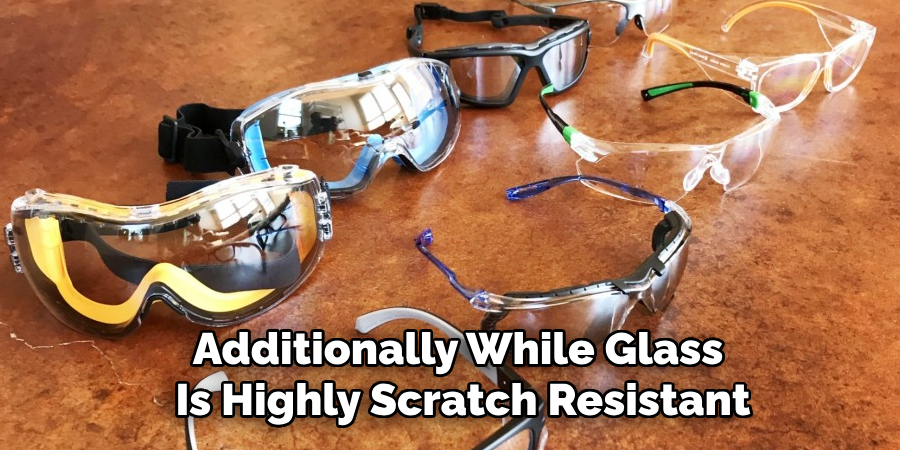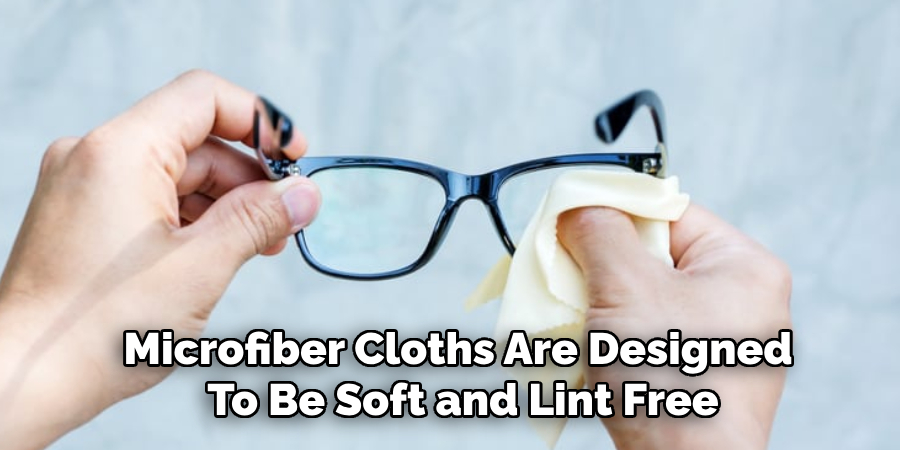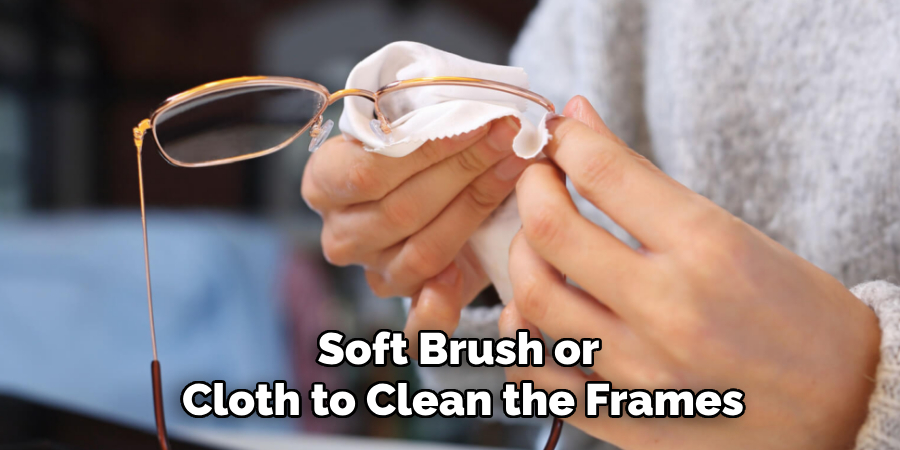Cleaning safety glasses is essential for maintaining clear vision and ensuring they provide the protection they are designed for. Whether you’re working in construction, a laboratory, or any environment requiring eye protection, clean safety glasses can prevent accidents and enhance productivity. Dirt, dust, and smudges not only obstruct your view but can also lead to eye strain and discomfort. Moreover, improper cleaning techniques can scratch or damage the lenses, reducing their effectiveness and lifespan.

Understanding the correct methods to clean safety glasses involves using the right materials, such as microfiber cloths and appropriate cleaning solutions, and following specific steps to avoid damaging the lenses. This guide will walk you through the best practices for how to clean safety glasses, including daily maintenance tips, recommended cleaning products, and techniques for removing stubborn stains. By following these guidelines, you can ensure your safety glasses remain in optimal condition, providing clear vision and reliable protection.
Understanding Safety Glasses Materials
Safety glasses are constructed from various materials, each chosen for its unique properties that contribute to the overall effectiveness of the protective eyewear. The lenses are typically made from polycarbonate, a versatile plastic known for its high impact resistance and optical clarity. Polycarbonate lenses provide excellent protection against flying debris and are lightweight, making them comfortable to wear for extended periods.
In addition to polycarbonate, some safety glasses feature lenses made from Trivex, another lightweight and impact-resistant material that offers superior optical quality and is particularly suited for precision tasks requiring keen vision.

Types of Lens Materials
When it comes to selecting safety glasses, understanding the different types of lens materials can help you choose the best option for your specific needs. Each material type offers distinct advantages in terms of protection, clarity, and comfort.
Polycarbonate
Polycarbonate is the most common lens material used in safety glasses due to its combination of impact resistance and optical clarity. It is lightweight and can withstand significant forces, making it ideal for environments where flying debris and blunt impacts are prevalent. Additionally, polycarbonate lenses naturally block UV radiation, providing added protection against harmful sun exposure.
Trivex
Trivex material offers many of the same benefits as polycarbonate, such as high impact resistance and lightweight properties, but boasts superior optical clarity. Trivex lenses are less likely to cause visual distortions, making them an excellent choice for tasks requiring precision and attention to detail. Like polycarbonate, Trivex lenses also provide natural UV protection.
Glass
Glass lenses are known for their exceptional optical clarity and scratch resistance. However, they are heavier than both polycarbonate and Trivex lenses, which can make them less comfortable for prolonged use. Additionally, while glass is highly scratch-resistant, it is more prone to shattering or breaking on impact, which can pose a safety risk in certain environments.

10 Methods How to Clean Safety Glasses
1. Rinsing with Lukewarm Water
The first step in cleaning safety glasses is to rinse them with lukewarm water. This initial rinse helps to remove loose dirt, dust, and debris that could scratch the lenses if wiped off directly. Hold the glasses under a gentle stream of water and let it flow over both sides of the lenses. Avoid using hot water, as it can damage the anti-fog or anti-scratch coatings on the lenses. Rinsing with lukewarm water is a simple but effective way to prepare the glasses for further cleaning without causing any damage.
2. Using a Mild Soap Solution
After rinsing, the next step is to wash the lenses with a mild soap solution. Use a small amount of dish soap or hand soap that is free from lotions or moisturizers. Apply a drop of soap to each lens and gently rub it with your fingers in a circular motion. Ensure you cover the entire surface of the lenses, including the edges and the frame. The soap helps to break down oils, fingerprints, and other stubborn residues. Once you have thoroughly cleaned the lenses, rinse them again with lukewarm water to remove all soap residue.
3. Drying with a Microfiber Cloth
Drying safety glasses correctly is crucial to prevent scratches. Use a clean, dry microfiber cloth to gently pat the lenses dry. Microfiber cloths are designed to be soft and lint-free, making them ideal for delicate surfaces. Avoid using paper towels, tissues, or clothing, as these materials can scratch the lenses or leave behind fibers. Start by blotting the lenses to remove excess water, then use a gentle wiping motion to dry them completely. A microfiber cloth ensures that the lenses are left clear and scratch-free.

4. Using Lens Cleaning Wipes
Lens cleaning wipes are a convenient option for cleaning safety glasses, especially when you’re on the go. These pre-moistened wipes are designed specifically for lenses and often contain a mild cleaning solution that evaporates quickly, leaving no residue. To use a lens cleaning wipe, remove it from the packaging and gently wipe both sides of the lenses, making sure to clean the entire surface. Use a fresh wipe for each cleaning session to avoid spreading dirt or grime. Lens cleaning wipes are portable and effective, making them an excellent choice for maintaining clear vision in various environments.
5. Applying an Anti-Fog Solution
Foggy lenses can be a significant nuisance, especially in humid or variable-temperature environments. Applying an anti-fog solution can help keep your safety glasses clear. After cleaning the lenses with soap and water, apply a small amount of anti-fog solution to each lens. Use a clean microfiber cloth to spread the solution evenly across the surface. Allow the solution to air dry, forming a thin protective layer that prevents fogging. Regular application of anti-fog solution can maintain clear vision and enhance the performance of your safety glasses.
6. Cleaning with a Lens Cleaning Spray
Lens cleaning sprays are specifically formulated to clean and protect lenses. To use a lens cleaning spray, first rinse the glasses with lukewarm water to remove loose dirt. Spray a small amount of the cleaning solution onto both sides of the lenses. Use a clean microfiber cloth to wipe the lenses in a circular motion, ensuring the entire surface is covered. The spray helps to dissolve oils, smudges, and dirt, leaving the lenses clear and streak-free. Lens cleaning sprays are effective and safe for most types of lens coatings.
7. Cleaning the Frames and Nose Pads
While cleaning the lenses is crucial, don’t neglect the frames and nose pads of your safety glasses. These areas can accumulate sweat, oils, and dirt, which can transfer to the lenses. Use a mild soap solution and a soft brush or cloth to clean the frames and nose pads thoroughly. Pay special attention to any crevices or joints where dirt can build up. Rinse the frames with lukewarm water and dry them with a clean microfiber cloth. Regular cleaning of the frames and nose pads ensures overall hygiene and prevents dirt from spreading to the lenses.

8. Using Ultrasonic Cleaners
For a deep clean, consider using an ultrasonic cleaner. These devices use high-frequency sound waves to create tiny bubbles in a cleaning solution, which gently removes dirt and grime from the lenses and frames. To use an ultrasonic cleaner, fill the tank with water and add a small amount of mild detergent. Place the safety glasses in the tank and turn on the device. The cleaning process usually takes a few minutes. After cleaning, rinse the glasses with lukewarm water and dry them with a microfiber cloth. Ultrasonic cleaners provide a thorough clean and are especially useful for heavily soiled glasses.
9. Storing Safety Glasses Properly
Proper storage of safety glasses is essential to keep them clean and free from damage. When not in use, store your glasses in a protective case to prevent scratches and exposure to dust. Avoid placing the glasses lens-down on any surface, as this can lead to scratches. If a protective case is not available, store the glasses in a clean, dry place away from direct sunlight and harsh chemicals. Proper storage practices maintain the cleanliness and longevity of your safety glasses, ensuring they are ready for use when needed.
10. Regular Maintenance and Replacement
Regular maintenance and timely replacement are key to ensuring the effectiveness of your safety glasses. Clean your glasses regularly to prevent the build-up of dirt and grime. Inspect the lenses for scratches or damage that can impair vision and compromise protection. If the lenses are scratched or damaged beyond cleaning, it’s time to replace the glasses. Using damaged safety glasses can pose a significant risk, as they may not provide adequate protection. Regular maintenance and prompt replacement of damaged glasses ensure that you always have clear vision and reliable protection.
Conclusion
In conclusion, maintaining clean safety glasses is essential for ensuring clear vision and effective eye protection. From rinsing with lukewarm water and using a mild soap solution to applying anti-fog solutions and utilizing ultrasonic cleaners, each method provides a detailed approach to keeping your safety glasses in optimal condition. Regular cleaning, proper storage, and timely replacement of damaged glasses are crucial practices that enhance both the performance and longevity of your safety equipment. Thanks for reading, and we hope this has given you some inspiration on how to clean safety glasses!
About
Safety Fic is a distinguished figure in the world of Diy design, with a decade of expertise creating innovative and sustainable Diy solutions. His professional focus lies in merging traditional craftsmanship with modern manufacturing techniques, fostering designs that are both practical and environmentally conscious. As the author of diy, Safety Fic delves into the art and science of Safety Fic-making, inspiring artisans and industry professionals alike.
Education RMIT University
(Melbourne, Australia) Associate Degree in Design (Safety Fic) Focus on sustainable design, industry-driven projects, and practical craftsmanship. Gained hands-on experience with traditional and digital manufacturing tools, such as CAD and CNC software.
Nottingham Trent University
(United Kingdom) Bachelor’s in diyfastly.com and Product Design (Honors) Specialized in product design with a focus on blending creativity with production techniques. Participated in industry projects, working with companies like John Lewis and Vitsoe to gain real-world insights.
Publications and Impact
In diy, Safety Fic his insights on indoor design processes, materials, and strategies for efficient production. His writing bridges the gap between artisan knowledge and modern industry needs, making it a must-read for both budding designers and seasoned professionals.
